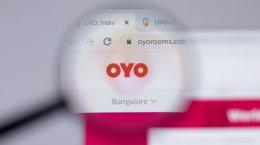Mergers and acquisitions (M&As), which stands at the top-end of the deal activity food chain, is a barometer of many corporate trends such as ambition, scale, size, consolidation, geographic reach, market access, capital-raising, foreign direct investment and so on.
Seen as mark of maturity, M&As constitute a significant landmark in any corporate’s life cycle as this is, often times, the only way to take the big leap as opposed to incremental growth. M&A triggers could be manifold: consolidation, market access, exit for investors, a solution to succession planning, foray into a new sector or unlocking value of assets and so on.
So, what does it take to strike the big blockbuster deal? VCCircle Dealmakers’ Conclave 2011, which saw participation from over 150 delegates from the ecosystem, kicked off its day-long conference with The Big Deal Story, moderated by Sanjay Bansal, MD, Ambit Corporate Finance. Rajesh Sawhney, President, Reliance Entertainment; Rajiv Saxena, Head M&A, Essar Group (who led acquisition of Algoma Steel and Minnesota Steel); Aditya Sanghi, MD, Investment Banking, Yes Bank Ltd and Sumant Sinha, Chairman, Savant Advisers (responsible for Novelis and Idea Cellular when he was CFO of Aditya Birla Group and as COO of Suzlon Energy, he oversaw the refinancing of debt) shared their unique insights and experiences of being at the vortex of some of India’s best-known bulge-bracket deals. Here are some key takeaways from the inaugural panel:-
Why big-tickets: The big M&A story in India is fairly young as it gained momentum only since 2005. The reasons for taking that big plunge could be several. For Rajiv Saxena of Essar, “Big-ticket M&A is to realize corporate’s global vision and to protect one’s businesses. If we are setting up power plants or steel plants, we have to secure the inputs. Most of the big tickets are in the Western world.” For Aditya Sanghi of Yes Bank, big-tickets, at a strategy level, are aimed to acquire competency, products, technology and buying market shares (Bharti-Zain). “These are reasons that are driving it. Starting a business anywhere is a huge challenge,” he said.
Are we biting more than we can chew? For Sawhney, it is about building platforms (strategic deal in Dreamworks). “That drove us to Hollywood to search for a platform and scale. In one shot we got to the centre of the global industry,” he added. Sinha feels it is about corporate vision and confidence. Citing the instance of Aditya Birla-Novellis deal, he said, it was the largest cross-border deal at that time. “Novelis is much bigger than AV Group. But we felt we could operate the plants much more efficiently,” he said, adding Hindalco had the cash and very high level of confidence. Rajiv Saxena of Essar says, M&A is a process when opportunity presents itself. “You can’t take too long to decide. You have to take a call soon irrespective of size,” he added.
Not enough domestic big-deal stories: The common refrain is if entrepreneurs (Indian) sell their companies, what would they do. “It is tough for businesses to sell firms lock, stock n barrel,” the panel said. There is also resistance to sell to another Indian promoter. But today, the panel feels, Indian promoters are ready to sell at the right value, which could sometimes be unviable and unreachable and may apply only to companies having inbound aspirations. Bansal says, in the next five years, “we should be able to talk about domestic stories.”
Financing: According to Sinha, any sensible transaction from a good company will get funded. "You will not see flakier transactions being financed. Overseas banks just do not have the appetite to do deals that are not solidly grounded or backed by a good promoter." Says Saxena, while a good deal gets financed, it is better not to be adventurous. Many a times, in the enthusiasm to do a deal, people tend to overlook the financing part and that can turn into a costly mistake. Also, the financing environment is a lot tougher now compared to 2007 when big tickets really started. There will be a lot more scrutiny and sponsor requirement, he added.
Value of PE in cross-border deals: Aditya Sanghi says, PE can play a bridging role as most of their investment committees are international. They can help in taking care of local management expectations in the initial period and play a comforting role for the ecosystem of the company.
Synergy Evaluation: The real deal begins when you have bought the asset and it is a part of you, especially in the case of cross-border deals. While some deals get done for a specific purpose, often, companies have to restructure bits of the acquired businesses as they prove insignificant in the larger scheme of things. Restructuring is now beginning to gain traction in the Indian context. Since many of the big-tickets happen opportunistically, driven by gut call, a complete synergy evaluation may not always be the case. In the case of Novellis, Sinha says, "we had done a deep analysis for five six months. We had a fairly good idea on synergies we were getting from the deal," adding, however, "That is not a typical transaction."
Key takeaways from big tickets: Sanghi says, Indian entrepreneurs need a checklist of risk assessment as lot of decisions driven by gut. When you are looking at a target, put down a proper risk list, he adds. Sumant Sinha says, “You need to understand local environment (global deals) extremely well. Understand the control rules and the host country’s regulations very well.” For Sawhney, the success of big-tickets lies in people, people and people as it is all about integration.
2011 outlook: The panel was positive on more deals (domestic and cross border) with key geographies of interest being US and Europe.





